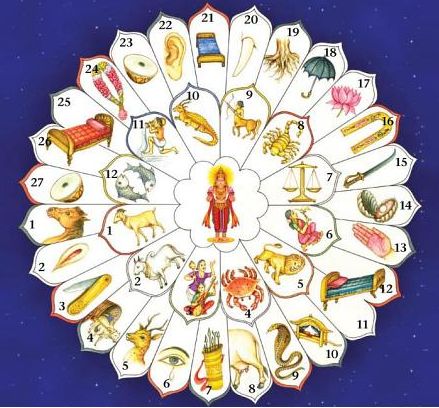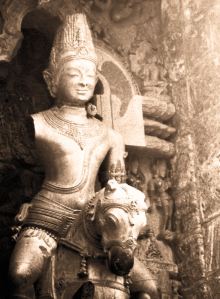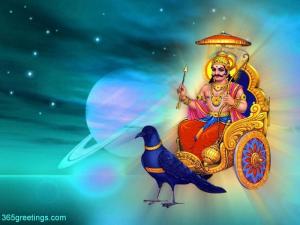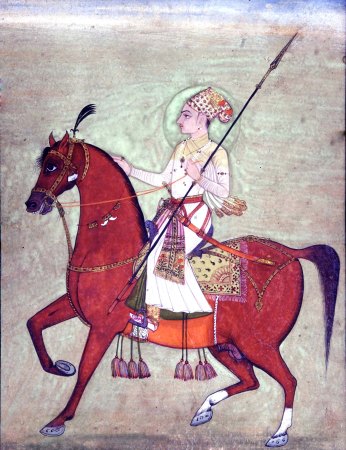The Gregorian calendar that we use in India to get along with our lives in the modern world is like a mask traditional India wears. The lunar calendar is the face behind it. What is fascinating is the ingenious marriage of the two as it has evolved in the lunar calendar for the traditionalist called the Panchang. While each of its pages displays a month of the solar calendar with dates as per the Gregorian calendar, it is impressive to see how with each Gregorian date, in the square for it is entered all manner of information on the passage of the lunar date and its astrological significance and the lunar defined festivals which are not merely stellar and astrological events but deeply religious ones.
Hindu spirituality and the stellar world are coterminous. Hindu mythology and cosmology move hand in hand each reflecting and strengthening the other. For the Hindu, the birth of the cosmos was after all a metaphysical event as much as a physical one. In the Beyond Beyond state, the Universal Unconscious Mind for a moment experienced an egotistical consciousness, triggering creation. Thus myth and math combine and while a pragmatic determination of days is derived from calculation of degrees and their sub division in the movement of the Moon and the Sun through the constellations of the Zodiac, the material fact governing the passage of material time in the material lives of people, there is also the metaphysical significance attached to these stellar passages based on the mythology and cosmology of the Vedas and the scriptures.Thus the gods acquire a stellar context, while the planets, a mythological one, with mythological reasons for their placement.
At the back of my mind therefore I have always been aware of that lunar date for addressing those issues but never really enquired who fixed it and how. Most Pundits and astrologers get their information from the Almanac while the public, from the dates given in the Panchang calendar but they rarely bother to find out how these dates get fixed. A lunar day can begin at any time during the Gregorian day and likewise end at any time with no regularity. Therefore festivals never arrive on the same Gregorian date each year. Sometimes there are two and on rare occasions even three lunar days during one Gregorian day. Intrigued and confused I decided to find out and called a reputed astrologer home to get to the heart of the matter. He warned me that it would be beyond my comprehension but I insisted that he give it a try. The following is the result of that.
Days of the month according to the Hindu Almanac begin with the first day after the full moon, Purnima and continue for fifteen days till no-moon, Amavasya. This is the phase called Krishna Paksha ( dark as Lord Krishna). Then commences the remaining half of the month when the Moon is in ascent called the Shukla Paksha. The thirty lunar ‘days’ of the two halves in terms of our solar month gets compressed into 27/29 days depending on the movement of the Moon. When a Tithi begins at sunrise it is co-terminous with a solar day but sometimes a Tithi can extend into more than a solar day even extending into the third solar day. Tithis extending into several solar days are considered inauspicious for certain activities like marriage.
The principle for determining a lunar day is acutely complex but with full astronomical logic. Simply put, the lunar day or Tithi is determined by calculating the difference in the longitudinal locations of the Sun and Moon in the Zodiac at 5.30 AM on any solar day. The figures for the location of the Moon are subtracted from the figures for the location of the Sun to arrive at the difference in degrees, which is then divided by 12. This is because it would be recalled, the Moon is deemed to traverse one Tithi every time it moves 12 degrees from the Sun’s location. From the resulting figure is subtracted 15 ( lunar days). The balance figure indicates the Tithi on a particular solar day in the Gregorian calendar.
The Panchang has two sets of tables in regard to the Tithi. One provides the location of the Sun, Moon and other planets at 5.30 AM on days of the Gregorian calendar, throughout the year. The time 5.30 AM has been adopted as mean time. The second set is specific to a city and provides the exact time of sunrise and sunset which varies from place to place. This information is necessary because the Sun is the principal heavenly body in astrology and is also the ‘witness’, much as fire is the witness in ritualistic fire worship of Yagyas. The daylight hours are the hours of the witness and therefore the span of time from sunrise to sunset become crucial as all auspicious activities must take place during this time. Furthermore before the advent of standard time for all India, it was the practice to calculate Tithis from place to place based on the time of sunrise and sunset. One Hindu king even went as far as building a grand open air observatory in the city of Jaipur in the 18th century to determine the precise movements of the Sun.
Let us now try and calculate a Tithi to make the issue clear. According to the Panchang on 25 July 2003 ( the date on which I consulted the astrologer about the manner of fixing Tithis) the Tithi at Jaipur was Ekadasi, the 11th lunar day. On that day the longitudinal location of the Sun and Moon are given as follows
Zodiac Sign Degree
( Rashi ) ( Ansha )
Moon 1 (i.e. 12+1=13) 18
Sun 3 8
___________________________________
subtract 10 10
NOTE: Each Zodiac Sign has 30 degrees of the 360 degrees of the Zodiac ( 12 Signs x 30 = 360)
The above indicates that on 25 July 2003 the Moon having traveled through the first Sign, Aries, was now in Taurus second Sign of the Zodiac having completed 18 degrees out of 30 degrees of Taurus. The Sun having traveled through the third Sign Gemini was in the fourth Sign Cancer having completed 8 degrees out of the 30 degrees of Cancer. The difference in the positions of the Sun and Moon was 10 Signs which is 10×30 degrees = 300 degrees. Add to that the difference in degrees which was 10, equalling 310 degrees. As the lunar calendar is divided into two phases of 15 days we subtract 15 days from no-moon to full moon (180 degrees) and are left with 130 degrees. Every time the Moon moves 12 degrees from the Sun it constitutes a Tithi. Dividing 130 degrees by 12 we get 10.8 days after the full moon. Thankfully this tortuous excersise is done by experts and the Pundit or the common man does not have to turn his hair grey doing it.
On 25 July therefore at 5.30 AM the major part of the 11th Tithi would have passed and only 0.2 of that Tithi would carry into the day until 8.58 AM at which point the 12th Tithi, Dvadashi would commence. Thus on the 25th July two lunar dates would occur, the eleventh and the twelfth. The twelfth would in turn terminate on the 26th at 10.42 AM. The above shows that lunar dates can occur at any time during the solar date and carry into the next solar date. The precise times of commencement and termination of Tithis are crucial for predictions of auspicious and inauspicious times for events in a Hindu’s life, for drawing up his horoscope, commencements of festivals and timings for prayers and even engaging in commercial activity. The Panchang provides all such information from city to city and are therefore an invaluable necessity for regulating such activities.
Now that we know what a Tithi actually is let us turn to their classification, to learn how some are auspicious and others not so. The basic principle is the strength of the Moon. It is generally auspicious when in full strength, five days either side of full moon, moderately so in between and inauspicious as it reaches no-moon status for five days on either side of no-moon.
The Tithis are classified in groups of three, into five categories : Poorna, Rikta, Jaya, Bhadra, and Nanda.
The Poorna Tithi implies that it is full, complete, all embracing and generally positive in conferring good effects. (These astrological interpretations based on Vedic injunctions are what one may call forecasts of a general nature for the multitude, equally applicable to all. The particular astrological forecasts for an individual of course will have to rely on his individual horoscope) The 5th, 10th, and 15th tithis are Poorna, which includes the full moon day, Purnima falling on the 15th tithi of Shukla Paksh. There is a traditional practice of leaving some milk in a metal salver in the open on such nights so that the auspicious rays of the full moon may empower the milk which is consumed the next day ensuring good health and fortune. The ruling planet of Poorna Tithis is Jupiter who confers riches, growth and strength. For religious and auspicious activities these are the best Tithis, particularly if they fall on Thursdays, whose lord is also Jupiter.
As against the Poorna, there are the empty category called Rikta, denoting want, impoverishment, weakness and scarcity. No celebrations or activities for gain should be undertaken on these Tithis. They are the 4th, 9th, and 14th Tithis. Their lord is Saturn, distant from the Sun and therefore a dark planet of want. A Rikta falling on a Saturday is particularly inauspicious.
Another category is Jaya signifying victory and courage. These fall on the 3rd, 8th and 13th. Here again the best Jayas are the 13th of Shukla Paksh (ascendant phase) and 3rd of Krishna Paksh ( descending phase), somewhat auspicious being the 8th of Shukla and Krishna and least auspicious are the 13th of Krishna and 3rd of Shukla. Lord of Jayas is Mars, therefore the best Jayas would be those that fall on Tuesdays, whose lord again is Mars. In activities where victory is desired, like in battle, legal conflict etc, Jayas are the best days to launch such activities.
Then we have the Bhadra category concerned with charitable and welfare activities. These fall on the 2nd,7th and 12th. Here again the most auspicious Bhadras are the 12th of shukla and 2nd of Krishna. the least auspicious are the 2nd of Shukla and 12th of Krishna. The ruling planet of Bhadras is Mercury and the best Bhadra would be the one falling on Wednesdays whose lord is Mercury.
finally there is the Nanda category falling on the 1st, 6th and 11th Tithis. Their lord is Venus and they denote pleasurable activities. These Tithis are appropriate for inaugurations and entertainment. The best Nandas fall on Fridays, Venus’ day and the most auspicious Nandas are the 11th Tithi of Shukla Paksha and 1st Tithi of Krishna Paksha.
This is how the curious Tithis rule the lives of Hindu traditionalists and often even those who are not but who wish to be on the right side of the stars, just in case.
































